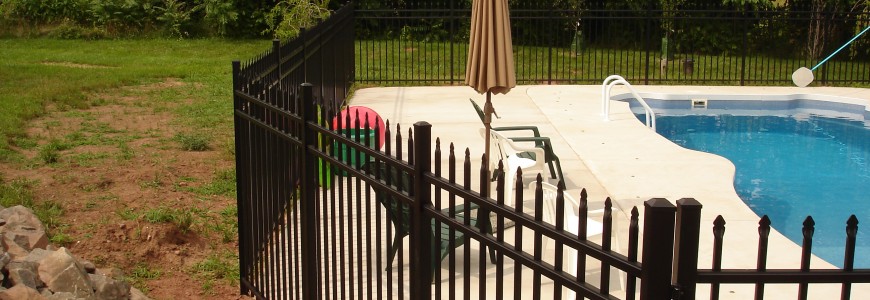When it comes to installing a fence, one of the key things you need to know is that your fence posts are the essential piece of the installation to keep your fence enclosure upright and straight. Poorly installed posts means that over time, your fence can become unstable. If your posts are too wobbly, the fence could collapse under pressure or during strong winds.
Many clients ask me whether or not to use gravel or concrete for setting posts. While gravel is less messy than concrete, it’s also less durable. Gravel tends to work best when fencing in heavier, more clay-like soils. It tends to work poorly if you’re setting posts in loose, sandy soil. However, if you’re building a fence that’s meant to keep in large animals, such as horses or highly active dogs, fence posts set in gravel may not handle the stress if the animals constantly run into them or try to push against your fence panels. Additionally, if your family and friends are likely to climb or sit on the fence, posts set in gravel may loosen over time.
Concrete is a semi liquid and tightly adheres to the hole and the post, which means the posts become highly stable and won’t move. You tend to get a better long-term result by setting the fence posts in concrete as opposed to gravel. When setting fence posts in concrete, it’s best to let the concrete dry for three or four days before attaching your fence rails, panels or pickets. Always make sure the concrete is solid and dry before attaching anything that puts weight on your posts.
How to Set a Fence Post in Concrete
Setting fence posts in concrete is fairly easy—it just requires a bit of patience and the right fencing tools. Below are the basic steps for setting fence posts in concrete to help you install a stable fence for the long haul:
- Dig a hole for each post (roughly two to three feet for optimal stability) using a 6” auger if possible. You can also use hand held post-hole diggers if you don’t have a machine. Typically, a post is set 2 feet below the ground, so a 5 foot tall fence requires a 7 foot post. A 6 inch diameter hole is sufficient for a post set 2 feet in the ground, anything bigger may require a large hole diameter. A good rule of thumb is twice the size of the post for hole diameter.
- Once you’ve completing digging, insert post in the hole, making sure that the post is level and plumb (even left and right, and even up and down).
- To set the posts, the best concrete solution is a ready mix called sakrete. You’ll want to fill the hole about 2 inches below grade with wet pour concrete.
- As you feel the hole with concrete, make sure the posts are plumb and the fence line is even.
- Fill the remainder of the hole with dirt.
When installing a fence, I recommend digging about four to five holes and setting them before moving on to the next round of posts. You shouldn’t dig and set all the posts first because there could be unforeseen obstacles (rocks, trees, grade) that could impact the distance between posts.
Ready to Build a Fence?
If you’re ready to build a fence, you can get started today with just a few clicks and order everything you need to install the best aluminum fence on the market! Click here to get started or open up a live chat session and we’ll get you on track for your aluminum fence project!

